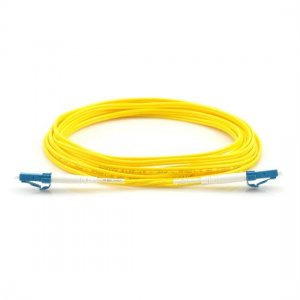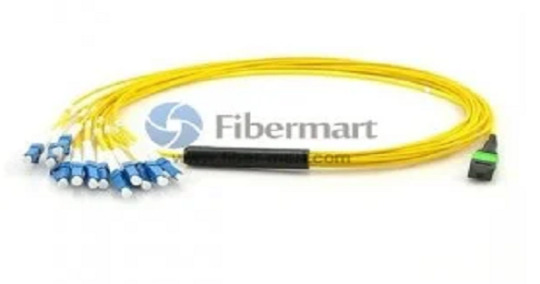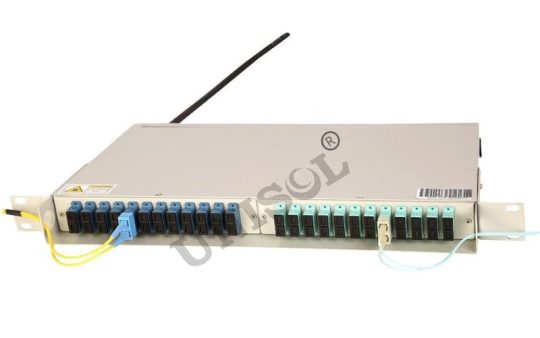#Singlemode Cable
Explore tagged Tumblr posts
Text
Fiber Patch Cable Maintenance to Optimize Network Performance
Glass or plastic fibers encased in a protective coating make up the thin, flexible Fiber Patch Cable. Their use of light signals for data transmission makes them perfect for long-distance and high-speed communication. There are several varieties of these cables, including single-mode and multi-mode, each intended for a particular use. The Value of Upkeep Stopping Pollution The sensitivity of…

View On WordPress
0 notes
Text

Stocking Seller Buy Discount Bulk Hybrid Fiber Optic Cables Online (fiber/fiber) Huge Invento to 288-count Cut-to-length US Brands Low Prices Fast Delivery https://hybridfiberopticcable.com/
#Bulk hybrid fiber optic cables#Discount Bulk hybrid fiber optic cables online#Singlemode Multimode Bulk hybrid fiber optic cables#Buy Indoor-Outdoor bulk hybrid fiber optic cables
1 note
·
View note
Text

Fiber Optic Adapter - SC Female to SC Female
A Fiber Optic Adapter (also known as a coupler or connector adapter) is a passive device used to connect two optical fibers with the same or compatible connectors. In this case, an SC Female to SC Female adapter would be designed to connect two SC-terminated fiber optic cables together.
Here's a breakdown of the components:
SC Connector: The SC (Subscriber Connector) is a common type of fiber optic connector with a square-shaped snap-in coupling mechanism. It is widely used in data communication and telecommunication networks. The connector has a push-pull design that ensures a secure connection.
Female Connector: The "Female" designation indicates that the connector has a socket or receptor to accept a male connector. In the case of an SC Female connector, it means that the adapter has an SC port with a socket to accept the male end of an SC-terminated fiber optic cable.
SC Female to SC Female Adapter: This adapter is designed to connect two SC-terminated fiber optic cables that have male SC connectors at their ends. Each side of the adapter has an SC Female port (socket) where the SC connectors from the cables can be inserted. This creates a continuous optical connection between the two cables, allowing light signals to pass from one fiber to another.
These adapters are useful in scenarios where you need to extend the length of a fiber optic cable or connect two cables with SC connectors that are too short to reach each other directly. Fiber optic adapters are commonly used in networking, data centers, telecommunications, and other applications where high-speed and reliable data transmission is crucial.
When choosing a fiber optic adapter, it's important to ensure compatibility between the connector types and the mode of the fiber (single-mode or multi-mode) being used. Additionally, make sure to handle and install fiber optic components with care to avoid damage to the delicate optical fibers and connectors.
#Fiber Optic Adapter#Buy Fiber Optic Cable Adapter Coupler#Fiber Optic Adapter SC to LC Singlemode Simplex#SC Male to LC Female UPC Fiber Optical#Fiber Optic Adapters#Fiber Adapters#Fiber Optic Connector Adapters
0 notes
Text
12 LC Fiber Optic Cable – High-Density Singlemode Breakout | Fiber-Mart
Enhance your network with Fiber-Mart’s 12 LC cable, a singlemode breakout solution built for high-density data environments like data centers and enterprise systems. Featuring 12 strands of flat MTP to LC/SC/FC/ST fiber, this cable offers fast, efficient connectivity while reducing signal loss. Its LSZH outer jacket ensures safety and compliance, making it ideal for riser and plenum installations. This cable supports quick deployment and excellent performance in structured cabling systems, where space-saving and high-capacity transmission are critical.

0 notes
Video
youtube
LC Fiber Patch Cable Singlemode, OM3, OM4 Duplex 1.6/2.0/3.0mm PVC/LSZH/...
Fiber jumper cables for superior optical performance in data centers, telecommunication systems, and enterprise networks.
Fibermart has a wide range of fiber jumper cables, available in both single-mode and multimode configurations, ensuring compatibility with several networking environments.
0 notes
Text
The Unveiling of Singlemode Patch Cable's Technology and Applications
Introduction: In the intricate realm of modern communication, the singlemode patch cable emerges as a beacon of precision, channeling data with unparalleled clarity through the intricate pathways of optical networks. This unassuming yet indispensable component stands as a testament to the pursuit of immaculate data transmission, enabling seamless connectivity across vast distances. This article…
View On WordPress
0 notes
Text
Multi-mode and Single-mode Fiber Optic Cabling Installation in Dubai, UAE
Singlemode cables should be used over long distances, whereas multimode cables should be used over short distances. Techno Edge Systems offers quality Fiber Optic Cabling in Dubai for Corporate Companies. We are the leading supplier of Fiber Optic Cabling. Call @ +971-547914851 for more info.
#fiberopticcablingindubai#fiberopticcablingdubai#fibercablingservicesdubai#fiberopticcableinstallationdubai#fiberopticcablingUAE#fiberopticcablingcompanydubai
0 notes
Text

1U Standard Rack Mount Patch Panel/LIU
SPECIFICATIONS:
Material : CRCA/Aluminum with 7 Tank Process powder coating.
Dimensions : 44*430*320 mm (H*W*D)
Color : RAL 7035/Black
Spool : FR grade PVC.
Cable grommet : FR grade Nylon
Splice Holder : FR grade ABC.
Splice Holder Dimension : 220*110*10 mm (L*W*D).
Cable Glands : Nylon with nitrile butadiene rubber, cable diameter of 5mm to 14mm max available
Fiber components standard : Telecordia GR 326
Insertion Loss : less <.3dB (Multimode), < .2dB (Singlemode)
Plug/Unplug durability : 1000 times
#patch panel#cctv#unisol#fiber optic product#fiber optics#unisol communication#rack patch panel#wall mount patch panel#cable winding & storing#1U Standard Rack Mount Patch Panel/LIU
1 note
·
View note
Text
Buy Splicing Machine for Maintain to your Network- Sumitomo Splicing machines are compatible with different types of fiber, such as singlemode, multimode, and polarization-maintaining fiber. Make sure the machine you choose is compatible with the type of fiber you will be splicing. Planning to buy splicing machine for maintain to your network, Go to Candid Optronix website-www.optronix.in and purchased it.
0 notes
Link
In the last few years, the use of optical fiber has experienced a significant leap in various industry verticals. The medium is wielded to hand on information via glass or plastic strands from one origin to another. The information is conveyed through optical conduits. And, then, the receiving end of a fiber optic conduction converts the light pulsates into binary values.
The fact that plastic conduits take recourse to light beats instead of electrical pulses to pass on information makes them deliver multiple times higher bandwidth than that of standard electrical systems. Fiber optic conduits can be well protected by proper sheathing to make it resilient to harsh environmental surroundings. Thus, they have now become a highly preferred choice in an array of commercial business enterprises as well as government organizations for voice, video and data conduction.
Multimode optical fiber, single mode optical fiber, and plastic optical fiber, these are mainly three kinds of optical fibers available in the market. A little more costly than its multimode equivalents, single mode fiber optic conduits are best fitted for network connections over protracted extent. Multimode optical fibers, on the other hand, tend to have a bigger core diameter than that of single mode plastic conduits, which enables multiple trails and a various wavelengths of light to be mediated.
At the same time, having a life cycle of around hundred years, optical fiber is much thinner than its copper counterparts and are pretty light weighted too. They can also be tipped to smaller diameters than copper flexes. As they are of smaller size and delicate weight than a copper bridle, they happen to provide better fit for places where space crunch is a huge concern.
Since optical fibers are much riddier than copper cords, more fibers can be hustled into a specific diameter tow line. This, in turn, permits more phone lines to run over the same cord or more straits to pull through the bridle into the respective cable box. The very feature of low signal degradation has also added to the perks of plastic conduits over the copper ones. Last but not the least; when it comes to optical fiber, light cues from fiber do not tend to intercede with other fibers in the same duct. Accordingly, this ensures much clear phone conversations or television recipience.
According to Allied Market Research, the global optical fiber and plastic conduit market is anticipated to register a considerable growth rate from 2018 to 2026. Especially, with the increasing incorporation of 5G network in several projects across the world, the market has gained a sizeable boost.
#OpticalFiber#PlasticConduit#OpticalFiberAndPlasticConduitMarket#SingleMode#Multimode#Cable#GlassOpticalFiber#PlasticOpticalFiber#5G#BroadbandConnectivity#FTTH#FTTB#Telecom#IT#FiberOptics
1 note
·
View note
Link
An optical fibre cable, also known as fiber-optic cable, is a common form of communication cable. Like an electrical cable, it is composed of a series of individual fibers that carry light. This type of cable can be used for a variety of applications, from wireless communication to data transmission. Optical cables are made of several different materials, including glass, plastic, and aluminium. The different types of optical cables can be easily distinguished by the color of their core.
An optical fibre cable has a core made of glass, plastic, or aramid, and is covered by a lightweight plastic sheath. The fiber is then terminated with a connector made of specialized fibers, such as a LC or SC connector. This connector makes it easy to connect to a transmitting device. Depending on its use, the cables can be buried up to 30 metres deep or installed up to 60m in height.
The two main types of optical fibres are single-mode and multi-mode. The former is characterized by a narrow core, which increases the index of refraction. The latter type of cable is more commonly used as it has a change in refractive index gradually over the diameter of the cable. This allows the light to be focused in the centre of the fibre rather than the outside. These features make the fibres ideal for communication networks.
For More Information Visit - https://apollotech.com.au/

0 notes
Text
12 LC Singlemode MTP Breakout Fiber Cables – Fiber-Mart
Upgrade your fiber connectivity with our premium 12 LC cable solutions at Fiber-Mart. This singlemode MTP breakout cable features 12 strands and is designed for high-density, high-performance network environments. Ideal for data centers, enterprise backbones, and telecom setups, the LC cable offers low insertion loss, superior durability, and easy management. Compatible with standard connectors, it ensures seamless integration and high-speed data transmission. Choose this breakout cable to streamline your cabling system with reliability and precision.
0 notes
Link
Difference between Single-mode and Multimode Fiber
0 notes
Text
Applications of Singlemode Patch Cables in Optical Communication
Introduction: In the realm of optical communication, singlemode patch cables stand as critical components, enabling seamless and efficient data transmission over long distances. These cables play a pivotal role in connecting optical devices, facilitating high-speed and low-loss signal transmission. This article delves into the technical evolution and diverse applications of singlemode patch…
View On WordPress
0 notes
Photo

TIL: Types of Optical Fibers
Optical fibers are thin fibers used to send light signals between systems. Fiber optic cable is used in communication equipment and patch panels in order to provide a physical connection within a network or device. They can transmit voice, video, and data between locations where speed and accuracy are both important and where distance between locations can cause a challenge. Fiber optic cables supersede metal cables due to the density of information that can be transmitted per unit of time. Additionally, these cables allow for longer transmission distances with low power loss.
Fiber optic cables consist of the following five major components:
· Core
· Cladding
· Coating
· Strengthening fibers
· Cable jacket
Cores can be made from glass or plastic. The light is guided through the core allowing for the transmission of data between locations.
Cladding prevents the light from escaping the core and being absorbed by the cable or surrounding area.
Coating protects the core and cladding with increased strength properties.
Strength member provides protection from damages incurred by stress on the cable.
Outer jacket is the final area of protection for the cable and is typically colored to assist the end user of the cable.
This basic design is used for all optical fiber cables. However, there are various types of optical fibers that the end user can choose from based on the requirements of the system being designed.
Four major types of optical fibers are:
· Single Mode (SM)
· Multimode (MM)
· Polarization-Maintaining (PM)
· Doped Fiber
Single Mode
Single mode fibers contain one mode and have a core size of 2-9 microns. This fiber type requires a laser source for input signals due to the size of the entrance aperture and light travels along the axis of the fiber.
Multimode
Multimode fibers can transmit or emit multiple modes of light. Typical core size for this type of fiber is either 62.5. microns or 50 microns. This fiber type allows for approximately 1000 modes through its core. In this fiber, light can travel along the axis of the fiber or reflect into the core-cladding boundary.
Polarization-Maintaining
Polarization-maintaining fiber polarizes the light through the fiber. Generally, stress is placed in the core through rods in the cladding of the cable. This stress aligns the fiber and light into a specific polarization. This fiber type is a special type of single mode fiber that can carry any one type of polarized light.
Doped Fiber
Doped fiber use an additional material within the core to change its optical properties and amplify an optical signal. Various materials can be used to create a doped single mode, multimode, or polarization-maintaining fiber. Typical materials used to create doped fiber include erbium and ytterbium. Erbium-doped fibers are used for erbium-doped fiber amplifiers while ytterbium-dopes fibers are used for high power fiber lasers and amplifiers.
#optic#optics#opticalfiber#fiber#optical fiber cable#multimode#singlemode#doped#dope#dopedfiber#learning#science#newtopic#wix#til#today i learned#tillyalex#ta.til#core#network#networks#networking
0 notes
Text

12 Port Rack Mount Patch Panel
SPECIFICATIONS:
Material : CRCA Mild Steel/Aluminum
Dimensions : 44*430*320 mm (H*W*D)
Process : Seven tank process/Zinc flake coating
Color : RAL 7035/Black
Spool : FR Grade PVC
Cable grommet : FR Grade Nylon
Splice Holder : FR Grade ABC
Splice Holder Dimension : 220*110*10 mm (L*W*D)
Cable Glands : Nylon with nitrile butadiene rubber, max cable diameter of 5mm to 14mm.
Fiber components standard : Telecordia GR 326
Insertion Loss : less <.3dB (Multimode), < .2dB (Singlemode)
Plug/Unplug durability : 1000 times
#patch panel#unisol#cable winding & storing#cctv#fiber optic product#fiber optics#rack patch panel#unisol communication#ST#FC and LC. It facilitates the splicing and termination of fiber optic cables (OFC) and pigtails in a fiber access network#making fiber optic communication installation and troubleshooting faster#easier#12 port rack mount patch panel#LIU#RACK MOUNT
1 note
·
View note